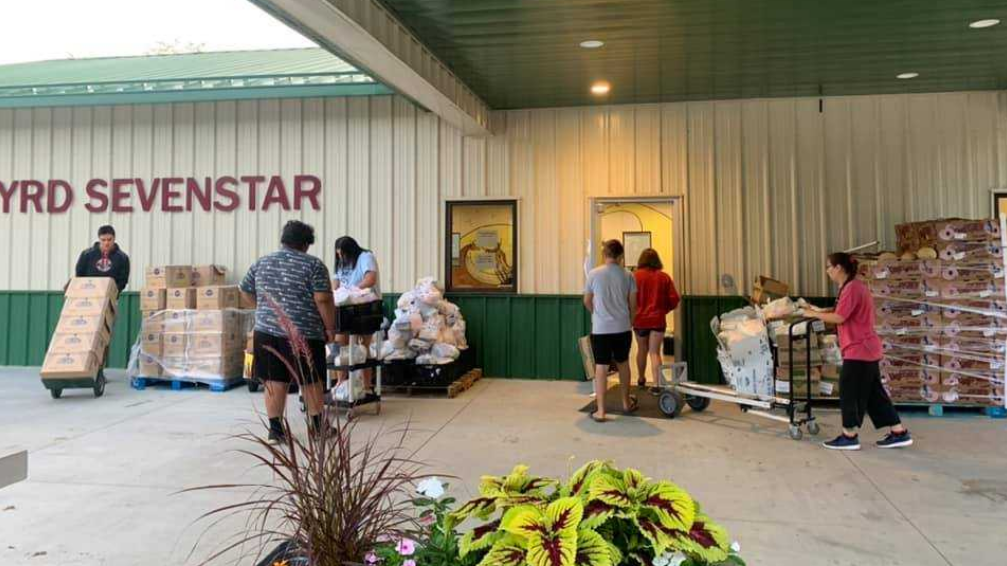
- Details
- By Chuck Hoskin Jr
Guest Opinion. For many Cherokees, their greatest source of connection to our tribe is through local Cherokee community organizations. Today, nearly 70 organizations belong to the Cherokee Nation’s Community and Cultural Outreach (CCO) network of grassroots community groups. These include over 40 groups within our 7,000-square-mile reservation and 25 at-large organizations throughout the country. The groups focus on a variety of areas, including cultural preservation, nutrition, community service, and more.
Our tribal government is dedicated to supporting these grassroots efforts. Recently, at the CCO annual conference, Deputy Chief Bryan Warner and I announced a plan to expand our highly successful Community Impact grants. The $1.675 million infusion into the Community Impact grant program will further the important work these groups do day in and day out.
The new Community Impact grants add to existing CCO programs, providing up to $25,000 per participating organization for community efforts addressing food security; public outreach and membership drives; surveys of critical needs; overhead costs; or support for volunteer in-kind assistance for community members in need.
The Cherokee Nation is blessed to have so many groups helping Cherokees stay connected and creating places where they can fellowship together, experience Cherokee culture and heritage, and get information on the services they might need. By investing in these groups, we are building up Cherokee communities and families, which are the heart of a strong Cherokee Nation.
The perpetuation of Cherokee lifeways and values happens at the local level, led by devoted volunteers. Those of us in public office cannot build strong communities and a strong nation from the top down. We must support them from the grassroots up.
I believe in the power of community organizing. The efforts of these community organizations live on across generations and will outlast the service of elected leaders, connecting our people with culture, a warm meal and the security of knowing fellow Cherokees have their back. Community, family and culture are integral to Cherokee lifeways.

Over the past few years we have been doing more than ever to empower our community partners. Before the pandemic, we signed the historic Housing, Jobs and Sustainable Communities Act, a $30 million effort to repair homes and create employment. The law also earmarked $7 million specifically for our CCO community organizations to make green energy renovations, like solar panels on community buildings. These projects reduced energy costs, which can make a big difference in a grassroots organization’s budget while protecting the environment.
When we reauthorized and expanded HJSCA last year, we set aside another $7 million to help community organizations do even more over the next three years. The environmental upgrades already completed across the reservation have reduced bills dramatically, and the reduction in operating costs means our CCO groups can stretch dollars to do other things. It also sends a message to our youth that we care about our shared future and the sustainability of the world they will inherit.
With the backing of the Council of the Cherokee Nation, we are investing in rural communities like Kenwood, Marble City and Bowlin Springs, places that many people have forgotten but Cherokee Nation never will. We are also offering public health and wellness grants for CCO organizations, because all Cherokees should have opportunities to exercise, achieve mental balance and learn about healthy nutrition.
The Deputy Chief and I have traveled extensively to visit with many local and at-large communities. No matter where we go, we find a hunger among Cherokee citizens to work together, in the spirit of ‘gadugi,’ to preserve our cultural identity. Thanks to community groups and the dedicated grassroots leaders and volunteers who bring them together, the Cherokee culture remains vibrant.
We look forward to working with our nearly 70 CCO participating organizations on the exciting new Community Impact grant program.
For more information on CCO programs, visit https://www.cherokee.org/all-services/community-cultural-outreach.
Chuck Hoskin, Jr. is the principal chief of the Cherokee Nation.
More Stories Like This
The Absence of October's Job Report Shows Why Native American Communities Need Better DataTribal IDs Are Federally Recognized. ICE Agents Are Ignoring Them.
Thanksgiving: Part of "Broken Circle Holiday"
Thanksgiving is a Tradition. It's Also a Lie
Decisions About Us, Without Us: Education Dismantling Ignores Tribal Nations
Help us defend tribal sovereignty.
At Native News Online, our mission is rooted in telling the stories that strengthen sovereignty and uplift Indigenous voices — not just at year’s end, but every single day.
Because of your generosity last year, we were able to keep our reporters on the ground in tribal communities, at national gatherings and in the halls of Congress — covering the issues that matter most to Indian Country: sovereignty, culture, education, health and economic opportunity.
That support sustained us through a tough year in 2025. Now, as we look to the year ahead, we need your help right now to ensure warrior journalism remains strong — reporting that defends tribal sovereignty, amplifies Native truth, and holds power accountable.
 The stakes couldn't be higher. Your support keeps Native voices heard, Native stories told and Native sovereignty defended.
The stakes couldn't be higher. Your support keeps Native voices heard, Native stories told and Native sovereignty defended.
Stand with Warrior Journalism today.
Levi Rickert (Potawatomi), Editor & Publisher

